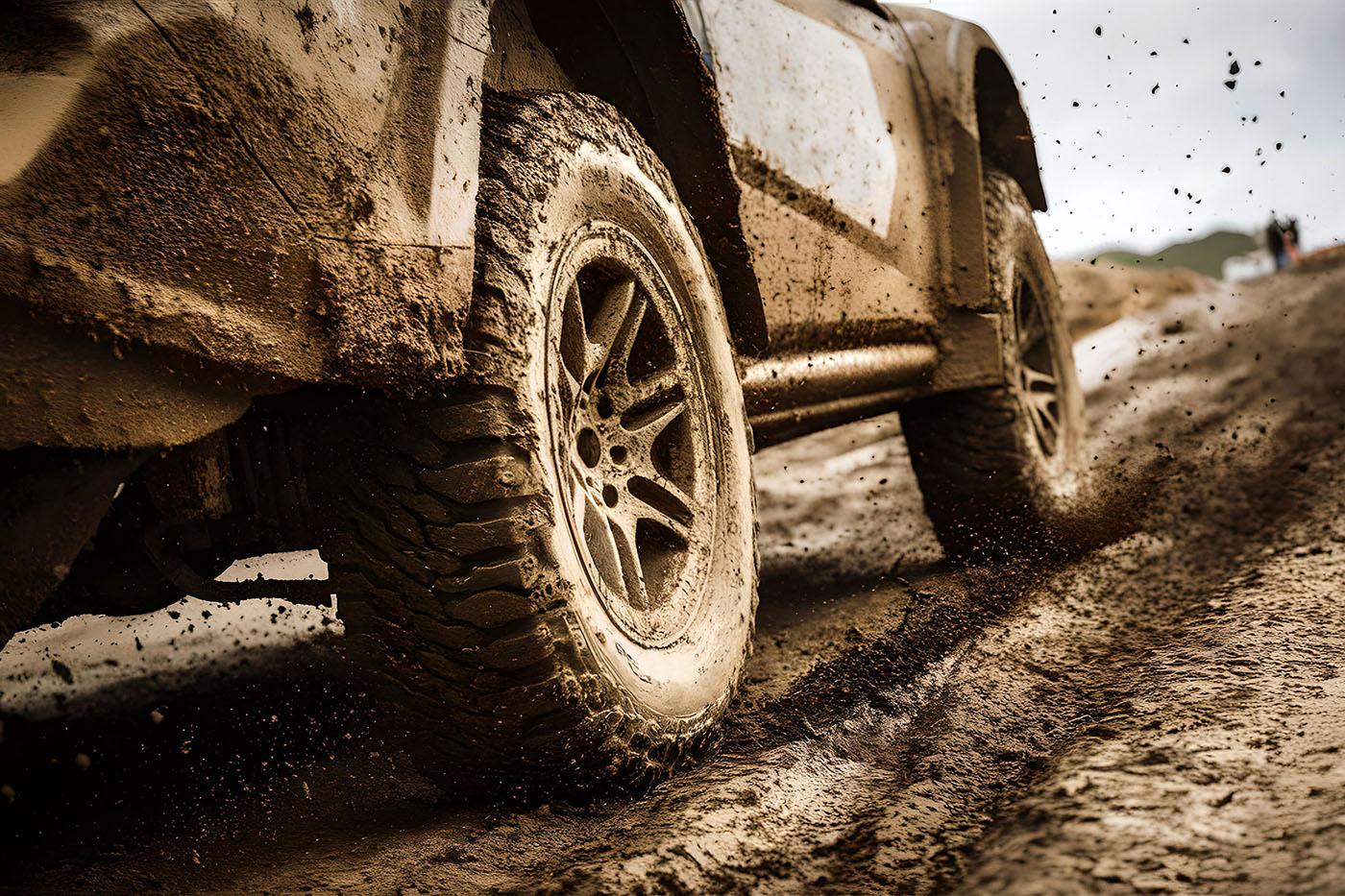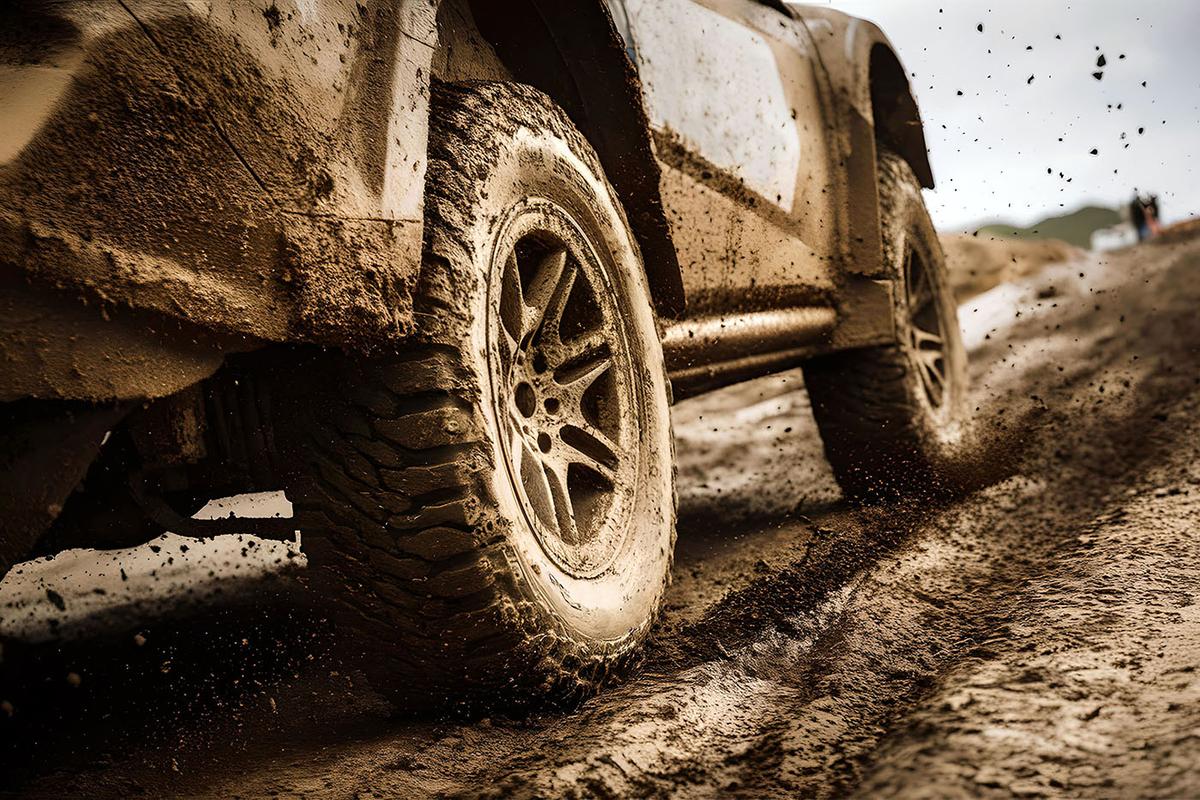

Heading off-road for camping or trail driving? The right tires can make all the difference between a smooth adventure and being stranded in the dirt. This guide breaks down what to look for in off-road tires, how to choose between all-terrain and mud-terrain, and how Snap Finance can help you get equipped without paying all at once.
Key takeaways
Tread design determines traction. Deep grooves and wide blocks help off-road tires grip dirt, gravel, and mud while clearing debris.
Durability is critical for rough terrain. Strong sidewalls and tougher rubber compounds protect against punctures and cuts from rocks or roots.
All-terrain and mud-terrain serve different needs. A/T tires balance daily driving with light off-road use, while M/T tires excel in extreme conditions.
Snap Finance helps make the upgrade possible. With lease-to-own tire financing, you can get adventure-ready tires now and pay later.
Whether you’re heading to a remote campsite or hitting rugged trails, the tires on your vehicle can make or break the trip. The right set gives you the traction and durability needed to explore with confidence, while the wrong ones can leave you stuck.
Shopping for new tires can feel overwhelming, but it doesn't have to be. This off-road tire buying guide will explain everything you need to know, from the best tire types for camping and trail driving and what features to look for to practical tips to afford the upgrade you need. Your next adventure is waiting, and it starts with the right tires.
What to look for in off-road tires
Before you start shopping, it helps to understand what makes a tire great for off-road use. It’s not just about looking tough; specific features determine how a tire performs once you leave the pavement. Here’s a simple breakdown of how to choose off-road tires.
Tread design
The pattern on your tire, or tread, is designed to grip different surfaces. For off-road driving, you want a tread with deep grooves and large blocks. This design helps the tire dig into soft surfaces like dirt, gravel, and mud, providing the traction you need to keep moving forward. It also helps clear away debris so the tire can maintain its grip.
Durability and sidewall strength
Off-road trails are often covered in sharp rocks, roots, and other hazards that can damage a standard tire. Off-road tires are built with tougher rubber compounds and reinforced construction to resist punctures and cuts. The sidewall – the side of the tire between the tread and the wheel – is especially important. A strong sidewall protects against damage from rocks and reduces the risk of a flat tire when you’re far from help.
On-road comfort vs. off-road performance
There is often a trade-off between a tire’s off-road capability and its on-road comfort. Aggressive off-road tires can be noisy and provide a rougher ride on the highway. Less aggressive designs are quieter but may not perform as well in extreme conditions. Think about how you use your vehicle. If it’s your daily driver, you’ll want a tire that balances both needs.
All-terrain vs. mud-terrain tires
Two of the most popular categories for off-road use are all-terrain (A/T) and mud-terrain (M/T) tires. Understanding all-terrain vs. mud-terrain tires is key to picking the right one for your adventures.
All-terrain (A/T) tires
All-terrain tires are the jack-of-all-trades in the tire world. They are designed to perform well on a wide variety of surfaces, from paved roads to dirt trails and gravel paths.
Best for: Drivers who split their time between daily commuting and weekend adventures. If your trip to the campsite involves a long highway drive before hitting a few miles of dirt roads, A/T tires are an excellent choice.
Features: They have a less aggressive tread pattern than mud-terrain tires, which results in a quieter, more comfortable ride on pavement. The tread still provides good grip for light to moderate off-road conditions.
Pros: Versatile, quiet on-road, long tread life.
Cons: Not ideal for deep mud, sand, or extreme rock crawling.
Mud-terrain (M/T) tires
Mud-terrain tires are specialists, built for the toughest off-road conditions. Their aggressive, blocky tread patterns are designed to churn through deep mud and grip uneven, rocky surfaces.
Best for: Off-road enthusiasts who spend most of their time on challenging trails, from tackling muddy paths to rocky climbs.
Features: Large tread blocks and wide, deep voids between them. This design self-cleans by flinging mud and rocks out, allowing the tire to maintain traction. They also have heavily reinforced sidewalls for maximum protection.
Pros: Unmatched off-road traction, extreme durability.
Cons: Noisy on pavement, shorter tread life, less comfortable for daily driving.
So, which should you choose? If your vehicle is also your daily commuter, an all-terrain tire is likely the best off-road tires for camping and light trail use. If you have a dedicated off-road vehicle or regularly face extreme conditions, a mud-terrain tire is the better option.
Seasonal considerations for camping and trail driving
The weather and seasons play a big role in tire performance. Your needs in the wet, muddy spring are different from what you’ll face during a hot, dry summer.
Wet and muddy conditions: Spring thaws and rain can turn trails into a sloppy mess. For these conditions, you need a tire with a deep, aggressive tread that can clear mud effectively. Mud-terrain tires excel here, but some aggressive all-terrain tires also perform well.
Snow and ice: If your camping trips extend into the colder months, look for an all-terrain tire with a "three-peak mountain snowflake" (3PMSF) symbol. This indicates it meets specific performance standards for severe snow conditions, offering better traction than a standard A/T tire.
Hot and dry conditions: Summer heat can be tough on tires. Look for tires made with compounds that resist wear in high temperatures. This is especially important for long road trips on hot pavement to reach your off-road destination.
Thinking about the conditions you’ll face most often will help you make a smarter choice and ensure you have the right grip when you need it.
The cost factor: Why off-road tires can be expensive
One of the first things you’ll notice when shopping is that off-road tires cost more than standard passenger tires. A set of quality affordable off-road tires can still run from several hundred to over a thousand dollars, especially for larger trucks and SUVs.
Several factors contribute to the higher price. The specialized rubber compounds, reinforced sidewalls, and complex tread designs all add to the manufacturing cost. Plus, their larger size means they simply require more material to produce. While it’s an investment, the right tires provide safety and capability that are priceless on the trail. But that doesn't mean you have to pay for it all at once.
How Snap Finance helps outdoor enthusiasts
The cost of a new set of tires shouldn't keep you from adventure. That's where pay-over-time options can help. Snap Finance tire financing is designed to make essential purchases more manageable, even if your credit isn't perfect.
If you don’t have perfect credit, lease-to-own financing may help you get the tires you need now. Snap Finance is a leading provider of lease‑to‑own financing.
In a lease-to-own agreement, Snap purchases the tires from the retailer and then leases them to you, the customer. As part of your agreement, you make payments over time to Snap. Once you make all your payments and have completed the terms of your lease agreement, you obtain ownership of the merchandise and it's yours.
How does Snap Finance work? I How does Snap Finance work?
Apply online or in-store. No credit is needed and it won't impact your FICO® score to apply.1
Get approved for up to $5,000 in lease-to-own financing.2 Use your approval amount to shop at tire retailers near you or online.
Pay later. Make payments over time. When you complete your payments and your lease agreement, the items are yours.
Pay early and save. Snap’s Maximum-Term Plan is 12-18 months or you can choose an early ownership option to save on overall lease costs.3
With Snap’s lease-to-own financing, you can get the offroad tires you need now and pay for them over time. Look for participating Snap retail partners on our Store Locator.
Shopping for off-road tires when money is tight
Thousands of partner tire shops across the country carry a wide selection of all-terrain and mud-terrain tires, making it easy to find what you need. Paying over time is a way to get budget-friendly 4x4 tire upgrades.
Consider this example: A camper was planning a summer road trip to visit several national parks. Their SUV's tires were worn and not suitable for the dirt roads they planned to explore. The camper used Snap Finance lease-to-own financing to get a new set of all-terrain tires. He applied in minutes and got an approval amount he used to get new tires. Snap Finance made it possible for the camper to head out on his trip with safe, reliable tires. With lease-to-own off-road tires, you can get your vehicle ready for adventure without paying for it all upfront.
Tips for extending the life of your off-road tires
Once you’ve invested in a quality set of off-road tires, you’ll want to make them last. Proper maintenance is key. Following these camping and trail driving tire tips can help you get the most out of your purchase.
Rotate your tires regularly: Off-road vehicles, especially 4x4s, can cause uneven wear. Rotating your tires every 5,000 miles helps them wear evenly and extends their lifespan.
Maintain proper inflation: Check your tire pressure often. Use the manufacturer's recommended pressure for on-road driving. When you go off-road, you might "air down" (reduce pressure) for better traction but remember to air back up before hitting the pavement again.
Clean them after trips: Mud, rocks, and other debris can get lodged in the tread. A quick wash after each off-road adventure not only keeps your vehicle looking good but also prevents damage.
Check for damage: After every trip, inspect your tires for any cuts, punctures, or bulges in the sidewall. Catching problems early can prevent a major failure on your next outing.
Get ready for your next adventure
Choosing the right tires is one of the most important upgrades you can make for your vehicle. The right set delivers a safer, smoother, and more enjoyable experience, whether you're driving to a family campground or tackling a challenging mountain trail. From understanding all-terrain vs. mud-terrain tires to knowing how to care for them, you’re ready to make an informed decision.
Don't let the cost hold you back. Snap Finance lease-to-own financing can help you get off-road upgrades now and pay later.
Find a Snap Finance partner tire retailer near you and get adventure-ready today.
The advertised service is a lease-to-own agreement provided by Snap RTO LLC. Lease-to-own financing is not available to residents of Minnesota, New Jersey, and Wisconsin.
1Not all applicants are approved. While no credit history is required, Snap obtains information from consumer reporting agencies in connection with applications, and your score with those agencies may be affected.
2Approval amounts vary from $300 to $5,000, subject to underwriting, and apply only to the cash price of leased items.
3The default payment plan is the Maximum-Term Plan, which includes 12- to 18-month renewable terms and is your highest cost option. To exercise an early ownership option, including any early buyout promotions, you must make all regular payments on time and ensure the required amount is paid within the applicable timeframe through the customer portal or by contacting Customer Care at 1-877-557-3769. Early buyout promotions may include a cost of lease above the merchandise price. For details and limitations, including relating to applicable early ownership options, refer to your lease agreement,